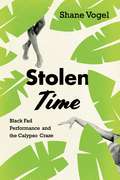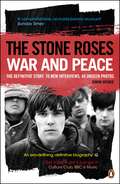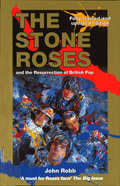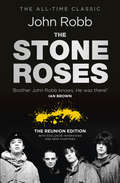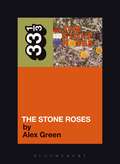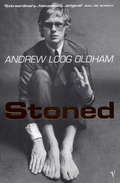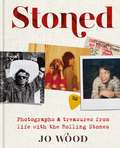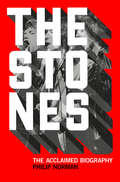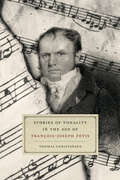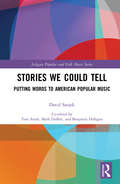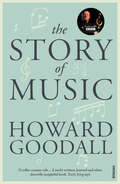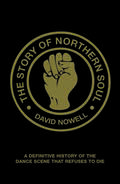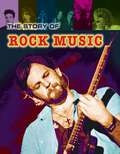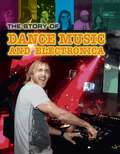- Table View
- List View
Stolen Time: Black Fad Performance and the Calypso Craze
by Shane VogelIn 1956 Harry Belafonte’s Calypso became the first LP to sell more than a million copies. For a few fleeting months, calypso music was the top-selling genre in the US—it even threatened to supplant rock and roll. Stolen Time provides a vivid cultural history of this moment and outlines a new framework—black fad performance—for understanding race, performance, and mass culture in the twentieth century United States. Vogel situates the calypso craze within a cycle of cultural appropriation, including the ragtime craze of 1890s and the Negro vogue of the 1920s, that encapsulates the culture of the Jim Crow era. He follows the fad as it moves defiantly away from any attempt at authenticity and shamelessly embraces calypso kitsch. Although white calypso performers were indeed complicit in a kind of imperialist theft of Trinidadian music and dance, Vogel argues, black calypso craze performers enacted a different, and subtly subversive, kind of theft. They appropriated not Caribbean culture itself, but the US version of it—and in so doing, they mocked American notions of racial authenticity. From musical recordings, nightclub acts, and television broadcasts to Broadway musicals, film, and modern dance, he shows how performers seized the ephemeral opportunities of the fad to comment on black cultural history and even question the meaning of race itself.
Stolen Time: Black Fad Performance and the Calypso Craze
by Shane VogelIn 1956 Harry Belafonte’s Calypso became the first LP to sell more than a million copies. For a few fleeting months, calypso music was the top-selling genre in the US—it even threatened to supplant rock and roll. Stolen Time provides a vivid cultural history of this moment and outlines a new framework—black fad performance—for understanding race, performance, and mass culture in the twentieth century United States. Vogel situates the calypso craze within a cycle of cultural appropriation, including the ragtime craze of 1890s and the Negro vogue of the 1920s, that encapsulates the culture of the Jim Crow era. He follows the fad as it moves defiantly away from any attempt at authenticity and shamelessly embraces calypso kitsch. Although white calypso performers were indeed complicit in a kind of imperialist theft of Trinidadian music and dance, Vogel argues, black calypso craze performers enacted a different, and subtly subversive, kind of theft. They appropriated not Caribbean culture itself, but the US version of it—and in so doing, they mocked American notions of racial authenticity. From musical recordings, nightclub acts, and television broadcasts to Broadway musicals, film, and modern dance, he shows how performers seized the ephemeral opportunities of the fad to comment on black cultural history and even question the meaning of race itself.
Stolen Time: Black Fad Performance and the Calypso Craze
by Shane VogelIn 1956 Harry Belafonte’s Calypso became the first LP to sell more than a million copies. For a few fleeting months, calypso music was the top-selling genre in the US—it even threatened to supplant rock and roll. Stolen Time provides a vivid cultural history of this moment and outlines a new framework—black fad performance—for understanding race, performance, and mass culture in the twentieth century United States. Vogel situates the calypso craze within a cycle of cultural appropriation, including the ragtime craze of 1890s and the Negro vogue of the 1920s, that encapsulates the culture of the Jim Crow era. He follows the fad as it moves defiantly away from any attempt at authenticity and shamelessly embraces calypso kitsch. Although white calypso performers were indeed complicit in a kind of imperialist theft of Trinidadian music and dance, Vogel argues, black calypso craze performers enacted a different, and subtly subversive, kind of theft. They appropriated not Caribbean culture itself, but the US version of it—and in so doing, they mocked American notions of racial authenticity. From musical recordings, nightclub acts, and television broadcasts to Broadway musicals, film, and modern dance, he shows how performers seized the ephemeral opportunities of the fad to comment on black cultural history and even question the meaning of race itself.
Stolen Time: Black Fad Performance and the Calypso Craze
by Shane VogelIn 1956 Harry Belafonte’s Calypso became the first LP to sell more than a million copies. For a few fleeting months, calypso music was the top-selling genre in the US—it even threatened to supplant rock and roll. Stolen Time provides a vivid cultural history of this moment and outlines a new framework—black fad performance—for understanding race, performance, and mass culture in the twentieth century United States. Vogel situates the calypso craze within a cycle of cultural appropriation, including the ragtime craze of 1890s and the Negro vogue of the 1920s, that encapsulates the culture of the Jim Crow era. He follows the fad as it moves defiantly away from any attempt at authenticity and shamelessly embraces calypso kitsch. Although white calypso performers were indeed complicit in a kind of imperialist theft of Trinidadian music and dance, Vogel argues, black calypso craze performers enacted a different, and subtly subversive, kind of theft. They appropriated not Caribbean culture itself, but the US version of it—and in so doing, they mocked American notions of racial authenticity. From musical recordings, nightclub acts, and television broadcasts to Broadway musicals, film, and modern dance, he shows how performers seized the ephemeral opportunities of the fad to comment on black cultural history and even question the meaning of race itself.
The Stone Roses: War and Peace
by Simon SpenceBased on 400 hours of interviews with over seventy of The Stone Roses' closest associates, including six former band members, War and Peace is the first major biography of the band that defined a generation.Originally planned in collaboration with Reni, the reclusive drummer, this book had been a year in the making when the Roses, against all odds, announced their re-formation. It is a remarkable coda to an astonishing story. In 1989 their debut album and the single 'Fools Gold' made them the most exciting British export since the Sex Pistols. With their incendiary aura the Roses became figureheads of the 'Madchester' movementWar and Peace traces the band's genesis, studded with violent gigs and abandoned recordings, and shaped by their infamous manager Gareth Evans. As their jeans grew wider and their songs more anthemic, the Roses' legendary gigs culminated in the era-defining Spike Island show in 1990. From this pinnacle the unravelling was spectacular. With the band refusing to play in America, arrested for vandalizing a record company and dragged through the High Court, the epic recording of their dark second album is the stuff of legend. They disbanded in turmoil in 1996.Since then the Roses myth has grown even bigger. 'I Wanna Be Adored', 'She Bangs the Drums', 'Waterfall', 'This Is the One' and 'I Am the Resurrection' have become national anthems, and their first album is widely recognized as one of the best ever made.But the true story behind their rise and fall - and resurrection - has never been told. Until now. From the Manchester backwaters to the worldwide 2012 tour, War and Peace lays bare the irresistible tale of the last of the great bands.* With 40 unseen photos, including from renowned rock photographer Dennis Morris
The Stone Roses And The Resurrection Of British Pop
by John RobbThe band, the lifestyle, the revolution. This classic biography charts the phenomenal rise of The Stone Roses to the icons they are today, using interviews, rehearsal tapes and the archives of author John Robb who was with them from the beginning.Robb's exclusive inside knowledge of The Stone Roses creates a compelling and intimate insight into how the band single-handedly set the blueprint for the resurgence of UK rock 'n' roll in the 1990s: Ian Brown's new lazy-style vocals, Reni's fluid, funk-tinged, ground-breaking drumming, and the guitar genius of John Squire. From the band members' early years to the inception of the Roses, through the tours and success, their influences and style, to the demise of the original line-up and their solo careers; every high and low is documented in minute detail.This is the definitive, most revered account of one of the most influential British bands in pop music history.
The Stone Roses And The Resurrection of British Pop: The Reunion Edition
by John Robb'The Stone Roses have become folk heroes, frozen in time. And their story, with roots in punk through post-punk, scooter boys, skinheads, Northern Soul, psychedelia, acid house and Madchester, is everything that is great about British street culture.'Reni. Mani. Ian Brown. John Squire.Names that will forever be remembered for creating their defining album The Stone Roses and a unique but inimitable baggy style.Their phenomenal story was first documented by the man who was with them every step of the way: John Robb. And now, in this special edition of his acclaimed and intimate biography, Robb brings the ultimate rock 'n' roll tale fully up to date.
The Stone Roses' The Stone Roses (33 1/3)
by Alex GreenThe Stone Roses shows a band sizzling with skill, consumed with drive and aspiration and possessing an almost preternatural mastery of the pop paradigm. This book explores the political and cultural zeitgeist of England in 1989, and attempts to apprehend the magic ingredients that made The Stone Roses such a special album.
Stoned: A Memoir Of London In The 1960s
by Andrew Loog Oldham'People say I made the Stones. I didn't. They were there already. They only wanted exploiting. They were all bad boys when I found them. I just brought out the worst in them.' Andrew Loog Oldham was nineteen years old when he discovered and became the manager and producer of an unknown band called The Rolling Stones. His radical vision transformed them from a starving south London blues combo to the Greatest Rock 'n' Roll Band That Ever Drew Breath, while the revolutionary strategies he used to get them there provoked both adulation and revulsion throughout British society and beyond. An ultra-hip mod, flash, brash and schooled in style by Mary Quant, he was a hustler of genius, addicted to scandal, notoriety and innovation.
Stoned: Photographs and treasures from life with the Rolling Stones
by Jo Wood"These images are great and have been tucked away for years"RONNIE WOOD Take a look inside rock 'n' roll history with over 500 never-before-seen photographs, notes, artworks, diary entries and mementoes from life behind the scenes of the Rolling Stones.Married to legendary Stones guitarist Ronnie Wood for 30 years, Jo Wood lived the rock star life. Her incredible collection of treasures from that time is a once-in-a-lifetime look inside the biggest band in the world.Accompanied by personal memories and behind the scenes anecdotes from Jo, Stoned is a love letter to the rock 'n' roll life and a truly unique window into the eye of the Rolling Stones hurricane.
The Stones: The Acclaimed Biography
by Philip NormanIn 2012 the Rolling Stones celebrate their 50th anniversary. Their story – the band's meteoric rise to fame, the Marianne Faithfull, Brian Jones and Altamont scandals, the groundbreaking hits – is the stuff of twentieth century legend, and core to popular culture.
Stories of Tonality in the Age of François-Joseph Fétis
by Thomas ChristensenStories of Tonality in the Age of François-Joseph Fétis explores the concept of musical tonality through the writings of the Belgian musicologist François-Joseph Fétis (1784–1867), who was singularly responsible for theorizing and popularizing the term in the nineteenth century. Thomas Christensen weaves a rich story in which tonality emerges as a theoretical construct born of anxiety and alterity for Europeans during this time as they learned more about “other” musics and alternative tonal systems. Tonality became a central vortex in which French musicians thought—and argued—about a variety of musical repertoires, be they contemporary European musics of the stage, concert hall, or church, folk songs from the provinces, microtonal scale systems of Arabic and Indian music, or the medieval and Renaissance music whose notational traces were just beginning to be deciphered by scholars. Fétis’s influential writings offer insight into how tonality ingrained itself within nineteenth-century music discourse, and why it has continued to resonate with uncanny prescience throughout the musical upheavals of the twentieth and twenty-first centuries.
Stories of Tonality in the Age of François-Joseph Fétis
by Thomas ChristensenStories of Tonality in the Age of François-Joseph Fétis explores the concept of musical tonality through the writings of the Belgian musicologist François-Joseph Fétis (1784–1867), who was singularly responsible for theorizing and popularizing the term in the nineteenth century. Thomas Christensen weaves a rich story in which tonality emerges as a theoretical construct born of anxiety and alterity for Europeans during this time as they learned more about “other” musics and alternative tonal systems. Tonality became a central vortex in which French musicians thought—and argued—about a variety of musical repertoires, be they contemporary European musics of the stage, concert hall, or church, folk songs from the provinces, microtonal scale systems of Arabic and Indian music, or the medieval and Renaissance music whose notational traces were just beginning to be deciphered by scholars. Fétis’s influential writings offer insight into how tonality ingrained itself within nineteenth-century music discourse, and why it has continued to resonate with uncanny prescience throughout the musical upheavals of the twentieth and twenty-first centuries.
Stories of Tonality in the Age of François-Joseph Fétis
by Thomas ChristensenStories of Tonality in the Age of François-Joseph Fétis explores the concept of musical tonality through the writings of the Belgian musicologist François-Joseph Fétis (1784–1867), who was singularly responsible for theorizing and popularizing the term in the nineteenth century. Thomas Christensen weaves a rich story in which tonality emerges as a theoretical construct born of anxiety and alterity for Europeans during this time as they learned more about “other” musics and alternative tonal systems. Tonality became a central vortex in which French musicians thought—and argued—about a variety of musical repertoires, be they contemporary European musics of the stage, concert hall, or church, folk songs from the provinces, microtonal scale systems of Arabic and Indian music, or the medieval and Renaissance music whose notational traces were just beginning to be deciphered by scholars. Fétis’s influential writings offer insight into how tonality ingrained itself within nineteenth-century music discourse, and why it has continued to resonate with uncanny prescience throughout the musical upheavals of the twentieth and twenty-first centuries.
Stories of Tonality in the Age of François-Joseph Fétis
by Thomas ChristensenStories of Tonality in the Age of François-Joseph Fétis explores the concept of musical tonality through the writings of the Belgian musicologist François-Joseph Fétis (1784–1867), who was singularly responsible for theorizing and popularizing the term in the nineteenth century. Thomas Christensen weaves a rich story in which tonality emerges as a theoretical construct born of anxiety and alterity for Europeans during this time as they learned more about “other” musics and alternative tonal systems. Tonality became a central vortex in which French musicians thought—and argued—about a variety of musical repertoires, be they contemporary European musics of the stage, concert hall, or church, folk songs from the provinces, microtonal scale systems of Arabic and Indian music, or the medieval and Renaissance music whose notational traces were just beginning to be deciphered by scholars. Fétis’s influential writings offer insight into how tonality ingrained itself within nineteenth-century music discourse, and why it has continued to resonate with uncanny prescience throughout the musical upheavals of the twentieth and twenty-first centuries.
Stories We Could Tell: Putting Words To American Popular Music (Ashgate Popular and Folk Music Series)
by David SanjekHow has the history of rock ‘n’ roll been told? Has it become formulaic? Or remained, like the music itself, open to outside influences? Who have been the genre’s primary historians? What common frameworks or sets of assumptions have music history narratives shared? And, most importantly, what is the cost of failing to question such assumptions? "Stories We Could Tell:Putting Words to American Popular Music" identifies eight typical strategies used when critics and historians write about American popular music, and subjects each to forensic analysis. This posthumous book is a unique work of cultural historiography that analyses, catalogues, and contextualizes music writing in order to afford the reader new perspectives on the field of cultural production, and offer new ways of thinking about, and writing about, popular music.
Stories We Could Tell: Putting Words To American Popular Music (Ashgate Popular and Folk Music Series)
by David SanjekHow has the history of rock ‘n’ roll been told? Has it become formulaic? Or remained, like the music itself, open to outside influences? Who have been the genre’s primary historians? What common frameworks or sets of assumptions have music history narratives shared? And, most importantly, what is the cost of failing to question such assumptions? "Stories We Could Tell:Putting Words to American Popular Music" identifies eight typical strategies used when critics and historians write about American popular music, and subjects each to forensic analysis. This posthumous book is a unique work of cultural historiography that analyses, catalogues, and contextualizes music writing in order to afford the reader new perspectives on the field of cultural production, and offer new ways of thinking about, and writing about, popular music.
The Story of Hip Hop (Pop Histories)
by Matt AnnissTake a journey through the hard-hitting history of hip-hop music. Witness DJ Kool Herc's first block parties and the origins of hip-house and scratching. See how cheap drum machines and talented turntablists changed music forever and meet some of the hip-hop scene's greatest stars. ABOUT THE SERIES: This heavily illustrated, magazine-style series tells the story of music from the 50s to the present day, featuring quotes from contemporary artists about their influences and inspirations.
The Story of Jazz
by Marshall W. StearnsThe effect of jazz upon American culture and the American character has been all-pervasive. This superlative history is the first and the most renowned systematic outline of the evolution of this unique American musical phenomenon. Stearns begins with the joining of the African Negro's musical heritage with European forms and the birth of jazz in New Orleans then follows its course through the era of swing and bop to the beginnings of rock in the 50s, vividly depicting the great innovators, and covering such technical elements as the music's form and structure.
The Story of Music: From Babylon To The Beatles: How Music Has Shaped Civilization
by Howard Goodall*** Accompanies BBC2's major new TV series and The Story of Music in 50 Pieces on Radio 3 *** In his dynamic tour through 40,000 years of music, from prehistoric instruments to modern-day pop, Howard Goodall leads us through the story of music as it happened, idea by idea, so that each musical innovation – harmony, notation, sung theatre, the orchestra, dance music, recording, broadcasting – strikes us with its original force. He focuses on what changed when and why, picking out the discoveries that revolutionised man-made sound and bringing to life musical visionaries from the little-known Pérotin to the colossus of Wagner. Along the way, he also gives refreshingly clear descriptions of what music is and how it works: what scales are all about, why some chords sound discordant and what all post-war pop songs have in common.
The Story of Northern Soul: A Definitive History Of The Dance Scene That Refuses To Die
by David NowellWhat began as an underground 60s Mod scene in unlicensed, no-frills clubs in the North West of England became a youth craze that has long surpassed all others. The Northern Soul scene has confounded its critics by surviving and growing into an adult dance phenomenon whose followers share a passion for the music of Black America unrivalled anywhere else in the world. The Story of Northern Soul takes the first ever in-depth look at the culture, the music, the artists and the people frequenting the all-night venues which are synonymous with the British Soul Scene. Packed with memorabilia and anecdotes from the Twisted Wheel in Manchester to the mighty Wigan Casino, The Story of Northern Soul is the definitive history of a dance scene that refuses to die.
The Story of Pop Music (Pop Histories)
by Matt AnnissTake a journey through the sensational history of pop music. Witness the early days of pop, and get the inside track on how managers created groups and shaped their world famous sounds. See how music television transformed the industry and meet pop's greatest stars.
The Story of Punk and Indie (Pop Histories)
by Matt AnnissTake a journey through the riotous history of punk and indie music. Experience the origins of post-punk, Britpop, indie-pop and alternative rock music. See how dance and grunge music made an impact and meet some of punk and indie's greatest stars. ABOUT THE SERIES: This heavily illustrated, magazine-style series tells the story of music from the 50s to the present day, featuring quotes from contemporary artists about their influences and inspirations.
The Story of Rock (Pop Histories)
by Matt AnnissTake a journey through the rip-roaring history of rock music. Find out about the origins of rock and roll, progressive, and heavy metal. See how indie and grunge music made an impact and meet some of rock's greatest stars. ABOUT THE SERIES: This heavily illustrated, magazine-style series tells the story of music from the 50s to the present day, featuring quotes from contemporary artists about their influences and inspirations.
The Story of Techno and Dance Music (Pop Histories)
by Matt AnnissTake a journey through the radical history of techno and dance music. Find out about the origins of house, techno, hardcore, and chill out music. Witness how the synthesizer changed the dance music world forever and meet the world's biggest superstar DJs. ABOUT THE SERIES: This heavily illustrated, magazine-style series tells the story of music from the 50s to the present day, featuring quotes from contemporary artists about their influences and inspirations.
